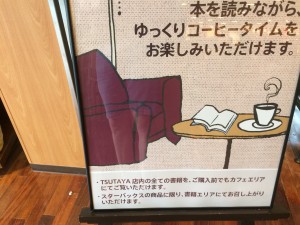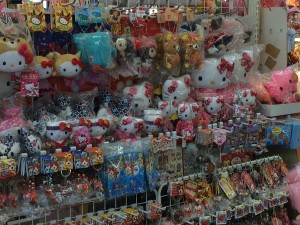I recently watched Eddie Izzard’s hilarious take on Latin being a silly-billy language. “It has a nominative, a vocative, an accusative, a genitive, a dative and an ablative…. Quad the f—k?” As I spend this year learning new languages I’ve noticed that Latin is not alone. There’s lots of silly languages. Since I’m in Japan right now, we’ll start with Japanese. After all:
- It’s really five different languages
- With ten different words for every number
- And squiggly pictures instead of an alphabet
First some caveats, since I know this post will go microbial or viral or whatever. My intent is to amuse, not offend. Japanese is no sillier than any other language. I don’t discourage anyone from learning it. The quirks are what makes it fun. I’m having a great time living in Japan, speaking in Japanese, meeting wonderful people, and eating all your sushi.
Polite Speaking
Japanese pretends to be one language, but it’s really about five different languages. There’s kiddy-speak, informal, polite, extra-polite, and super-duper polite. Using the right version was a survival skill in the time of the samurai, who were either thin-skinned, or just high maintenance. This is called keigo.
So you have to learn five different ways to say…everything, which is silly enough by itself. Then you have to rate everyone you ever want to talk with. Are they friends-friends or just facebook friends? Are they a samurai? Are they an employee who will never climb the ladder, so you can demand complete obsequiousness? Or might they one day be your boss and remember every time you humiliated them?
If that weren’t silly enough, you also can’t learn by repeating what other say. And when I say something, the other person has to use a different version to repeat it back. If I say someone is my niece, I use “mei” for niece. But my listener will say, “oh, she’s your ‘mei-go’”. By making it polite it sounds like they’re trying to correct my vocabulary. But if I use “mei-go” for my own niece, it sounds haughty.
The biggest reason these politeness dialects are silly is that it doesn’t matter. It’s not the words you use that make you polite, it’s the tone of voice. People are not polite because they call out “irashamasaaaaaaaaay.” They’re polite because what’s in their heart comes out in their tone of voice. “Arigato gozaimas” loses it’s politeness effect when it sounds like the bus driver’s soul has been stolen by a dementor. “Gozaimaaaaaassssss”. (Actually heard 100 times on a Kyoto bus ride.)
Counting
Somewhere in history, a charlatan punked the Japanese people into thinking it would be bad luck to use the same number system to count cats and people. Those should be separate. So should the ones for umbrellas. And hamburgers. And bicycles. And DVDs. He was a very forward-thinking charlatan.
Here’s the word for “five” referring to different objects:
- go-nin (for people)
- go-hiki (for animals)
- go-hon (for umbrellas, pens, tubes)
- go-mai (for DVDs, paper, flat objects)
- go-dai (for TVs, big objects)
- go-kai (for floors of a building)
- itsutsu (for hamburgers and small objects)
By the way, the above is a “normal” example. The word for “one” is “ichi”, but it becomes “hitori” for people and “hitotsu” for hamburgers (and other small objects.)
Look, if you want to keep people separate from animals or hamburgers, I can understand that. Up to a point. Just show some restraint. Maybe instead of seven categories, you just pick two, ok?
Keep in mind you still have to put the noun after it. I’m tempted to say “go-hon neko” (cats), to see if people would ask if they were tubular cats. (Using the extra-polite form no doubt. Irony for the win.) “go-mai neko” could be two-dimensional cats. And “go-dai neko” could be large blow-up cats waving at you from the top of a used car sales office. “Itsutsu inu” might be little doggy-burgers. (Too soon?)
I can’t count the number of times I’ve asked for one person instead of one donut. I literally cannot count it, because I don’t know which number system that falls into.
Kanji
Talk about the power of inertia. Everyone makes fun of the qwerty keyboard as a vestigial arrangement from the analog typewriter era. But take a look at Kanji, like 英語. These tiny little pictures combine a flower, a person, a circle, a mouth, a tongue, and some whisps of air into a couple of squares to mean… English (all that, and it’s pronounced “ei-go”)

The first bullet requires FOUR alphabets! Romaji, hiragana, kanji, and katakana. “Why, Japanese people? Why?”
First, Kanji is not compatible with those polite forms we mentioned. So Japanese starts with the kanji but then tacks on a real alphabet at the end. The Kanji for “eat” is 食 (pronounced “ta”). But you have to write it as 食べます (“ta-bemas” to make it polite) or 食べる (“ta-beru” for your inner circle.)
The second problem is that it’s not phonetic. You can’t sound it out. Well, you could, but there’s 4,000 Kanji, and only 100 unique sounds. So there are forty different Kanji that sound like “ah”, another forty that sound like “oh”, etc.
The truth is that no one can actually read Kanji. The Japanese have admitted as much, because they subtitle the kanji. Every manga book and every subway ad has letters from the phonetic alphabet under the kanji. If no one understands it, why are they still using it? To quote Atsugiri Jason “Why, Japanese people, why?!”
What is the silliest thing about language for you? It can be your native language or a second language. If I like it, I’ll include it in a future version of Blank is a Silly-Billy Language.




Pingback: Japanese From Nothing | A Year of Travel
This is my favorite post so far. I lol’d. I cannot tell you how many times because one cannot count laughter. Or can one?
Oh yeah, laughter can totally be counted. But I haven’t learned which number system the use for that one yet. Maybe I’ll make up a new one. 1-ha laugh, 2-ha laughs, 3-pa laughs,…